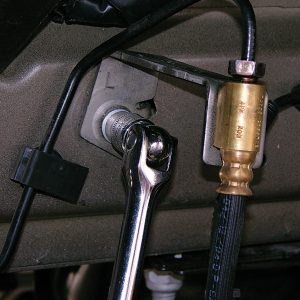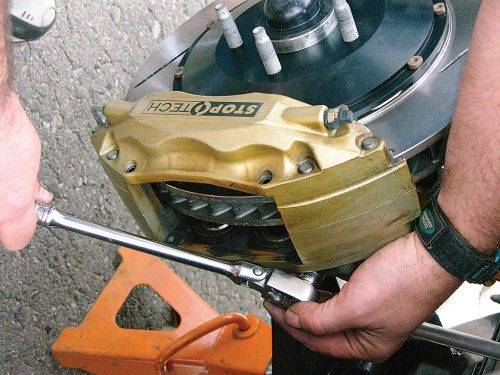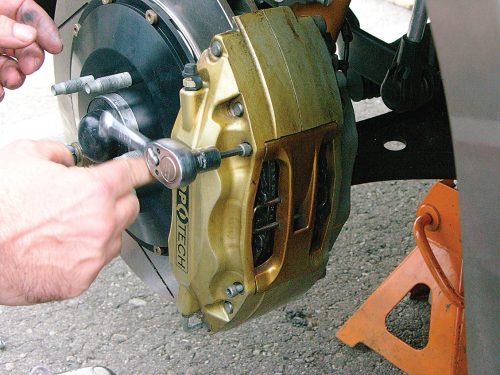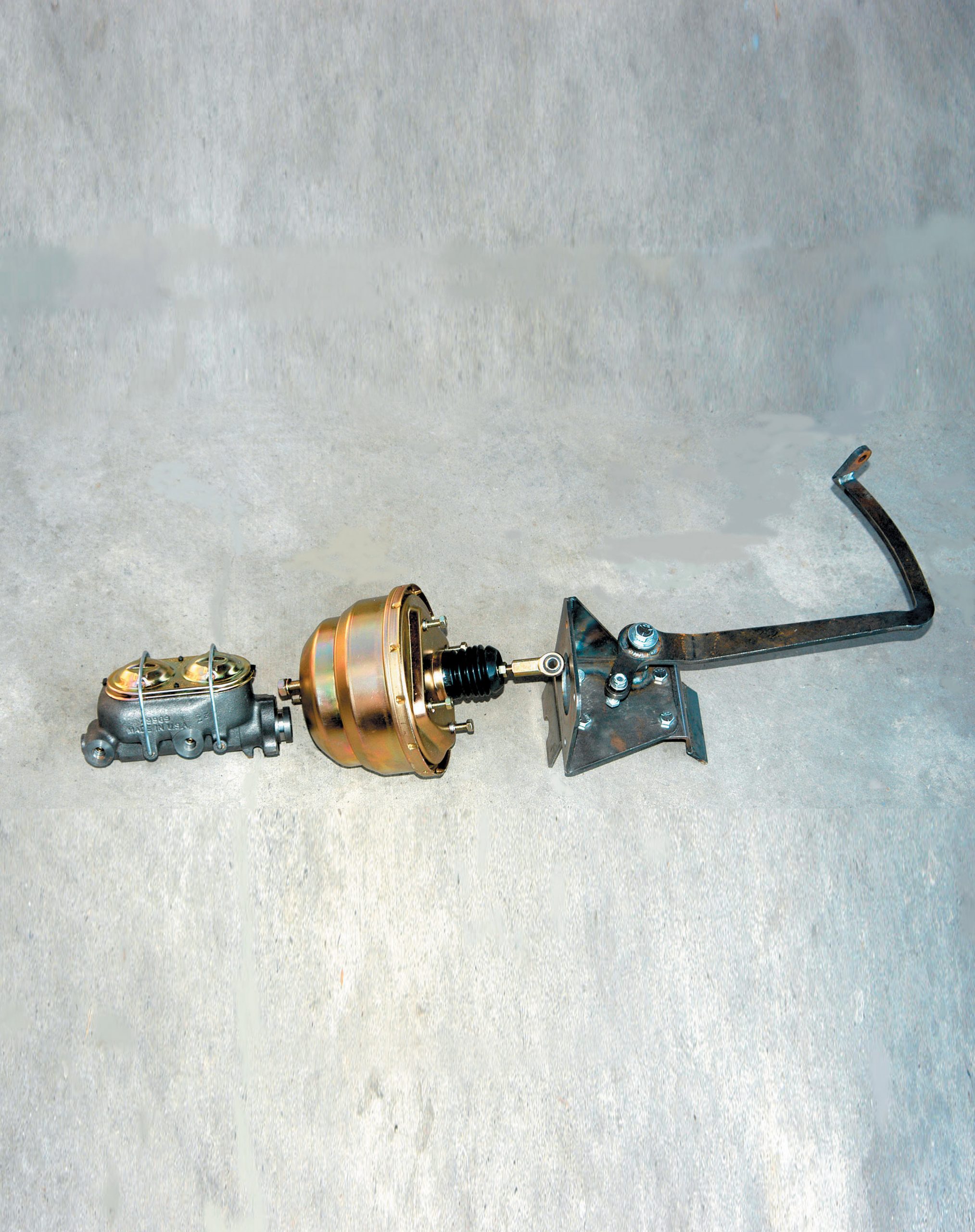After seeing several ʼ05 Mustangs fitted with StopTech brakes on display at various shows, we made it a point to talk with them about the system they have designed for this car. The result was an impromptu testing session at the California Speedway in Fontana. As it turns out, just because the company had developed a kit that fit the Mustang didnʼt mean they were finished—not by a long shot.

Though itʼs tempting to think that adding any big-brake kit will decrease a carʼs stopping distance, that is not always the case. Companies such as Ford spend huge sums of money developing OE brake fittings—probably more than all the aftermarket brake companies combined. Thatʼs not to say that the OE testing is performed on exactly the same plane, but through any testing, huge amounts of data are assembled. You learn a lot. Ford must produce a highly effective combination of brake hardware as it is mated to ABS software, and it must do this at a value that makes sense for a given platform. Improving on production configuration isnʼt always easy, especially since you have to put a price tag on the resulting components.
One of the first things that the StopTech engineers told us during our test was that we would not see anything dramatic. In fact, Engineering Manager Steve Ruiz said heʼd be happy if StopTech produced a system that stops a foot or two shorter than stock in one stop test. He then went on to say that it is really a secondary goal to reduce stopping distance. They primarily want to improve the ability to stop from high speeds multiple times without fade. StopTech also worked to reduce pedal travel and improve modulation by choosing the correct piston sizes while reducing weight and looking nice.

StopTech performed two different braking tests, using Tiger Racingʼs ʼ05 Mustang as a test mule. The first test was probably exactly what you think it should have been—to make sure the brakes were properly broken in and then to drive the car up to speed in a straight line and see how long it took it to stop. Thatʼs exactly what they did, but beyond measuring stopping distance, they also paid attention to the temperature of the front and rear rotors and to the actual time required for the stop. They first tested the stock brake configuration, which consists of two-piston calipers and 12.4-inch rotors in front and single-piston 11.8-inch rotors in back. They stopped the car first from 60 mph, then from 80 mph and finally from 100 mph, performing multiple tests to get a true average and to see whether the brakes began to fade with repeated high-speed stopping.
The second test was one that we hadnʼt anticipated—a skidpad braking test. This test is important because it helps measure the balance of a particular braking system. Proper balance is critical, because if the brakes are biased excessively toward the front wheels, stopping distance increases because the rear brakes arenʼt performing at their designed potential. The same is true of excessive rear brake bias, with the added hazard that the car begins to become very unstable during braking, and spins become increasingly likely. The skidpad braking test measured whether the car had a tendency to go nose-out or tail-out during hard braking in a turn. StopTech uses this information to ascertain whether the brake balance is optimal, and it lets StopTech know what it can do to improve it if itʼs not.
Based on its experience in designing brake systems and its extensive database, StopTech starts by specifying a size that it expects to be a balanced brake system close to the optimum. The testing helps to either confirm these expectations or to further refine the size that they ultimately include in the kit. After testing the stock brakes, the engineers made an educated guess and installed the first of four sets of calipers they had intended to test. Each was a four-piston caliper design, grabbing 355-millimeter (14-inch) rotors, but each set of calipers featured a different piston configuration. Altering the size and the arrangement of the pistons can have a huge effect on braking performance, as does altering the coefficient of friction of the pads. And contrary to what seems logical, pads that produce less friction will not necessarily stop worse than those that produce high friction. It proved true in this case, as greater-than-stock torque output tended to hurt the performance because of the vehicleʼs ABS programming.
In the day we spent with the StopTech engineers and technicians putting screeching marks on pavement, they were not able to find just the right piston/pad configuration that satisfied them, but thatʼs the life of an engineer and the entire purpose of testing. They will come back in a few days for additional testing because thatʼs what they do prior to releasing a kit—everything must be up to their standards. Perhaps the most interesting part of the testing for us was actually being able to see the car acting differently when fitted with different calipers and components. In some tests, the car stopped extremely straight, but its performance was no better than stock. In other tests, the front or rear wheels of the vehicle would alternately lock and release, oscillating as the ABS cycled. Ruiz said this was a good example of a vehicle that required a careful matching of every braking component to avoid degrading the stopping performance.
In the end, the size finally chosen for the Mustang kits was about a half-step change from what was initially thought to be relevant. The results showed that in the 60-to-0 stops, there was a reduction of the best stopping distance, from 123.2 feet to 120.2 feet, and an average reduction from 126.4 feet to 124.0 feet. Similarly, in stops from 100-to-0, a reduction from 332.0 feet to 316.2 feet, and an average reduction from 338.4 to 320.7 feet occurred. Interestingly, all of the best stops came after the second to fourth stops—after the brake pads became hot.






























